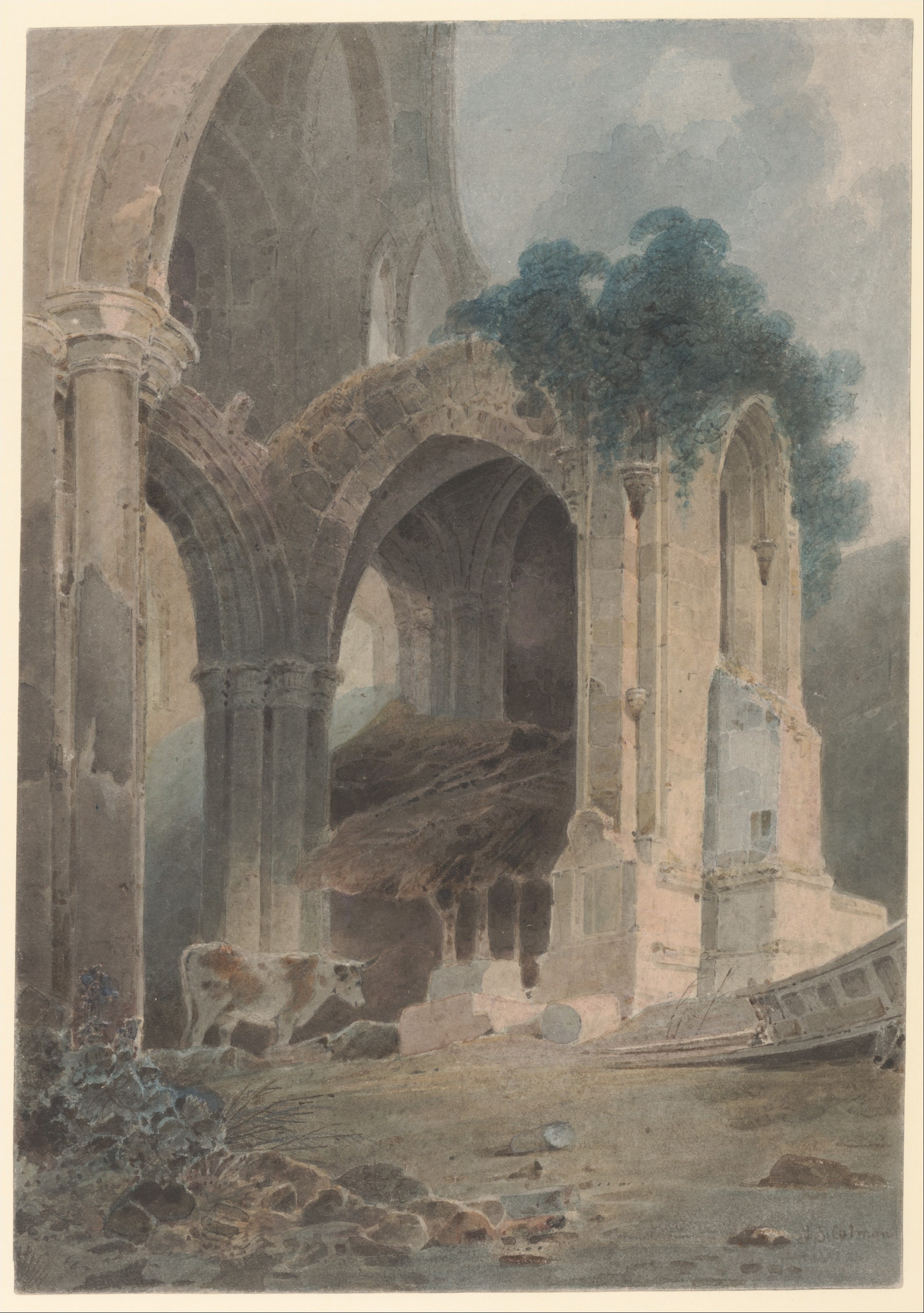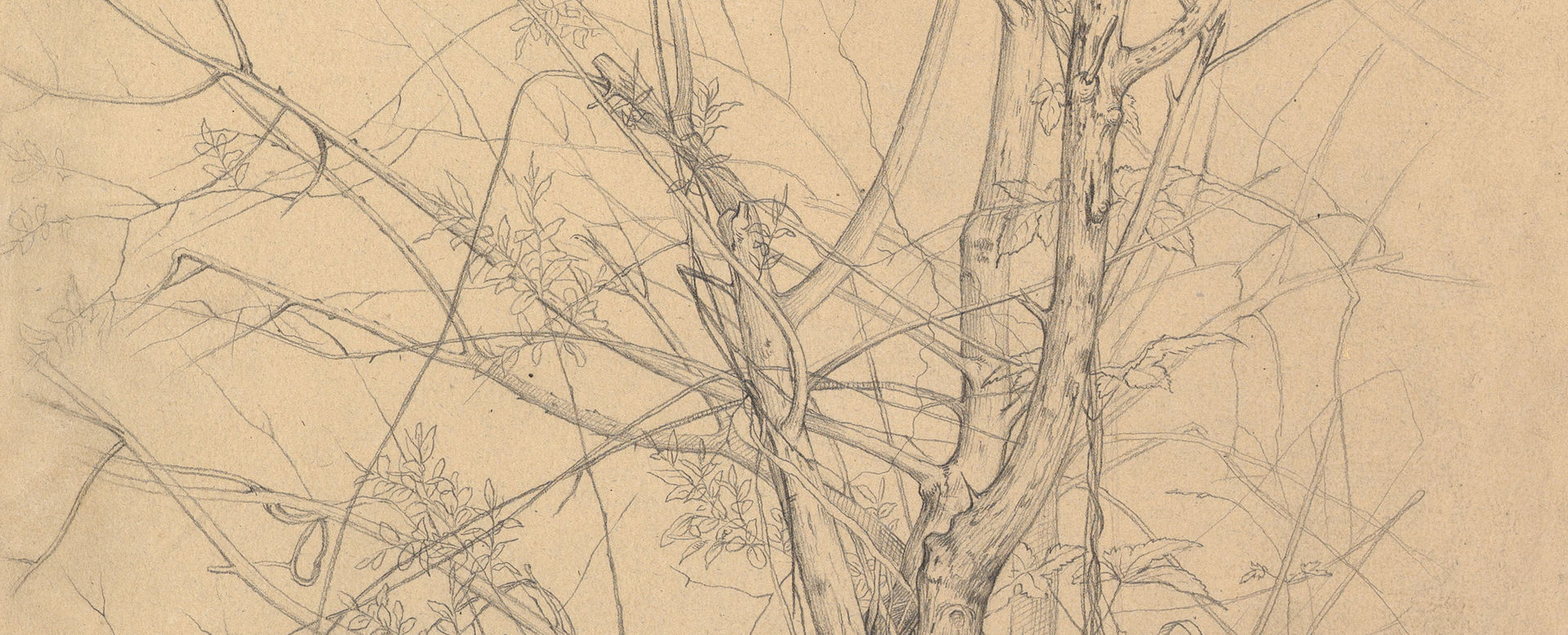The east end of Rievaulx Abbey, Yorkshire
John Sell Cotman British
Not on view
Cotman’s innovations reshaped watercolor painting in Britain and expanded the medium’s aesthetic potential. Born in Norwich, northeast of London, the artist relocated to the capital between 1798 and 1806, traveling and sketching in the summers. This moody image of the Gothic abbey at Rievaulx relates to a Yorkshire tour of 1803. By Cotman’s day, the ruins of Rievaulx—one of the Catholic institutions dissolved by Henry VIII when he broke from Rome in 1534—sheltered cattle and, for the artist, evoked the transience of human endeavor. Technically, the drawing demonstrates how, even early in his career, Cotman transformed architectural and natural forms into arresting two-dimensional patterns.
Due to rights restrictions, this image cannot be enlarged, viewed at full screen, or downloaded.
This artwork is meant to be viewed from right to left. Scroll left to view more.





